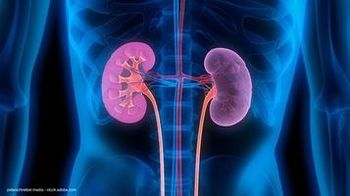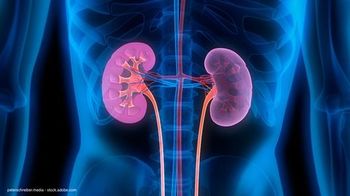
Resistant E coli shows 'huge' genetic variability
Washington—Molecular typing reveals significant genetic variability among outpatient urinary isolates of fluoroquinolone-resistant Escherichia coli, according to a study of isolates in North America. DNA testing using pulsed-field gel electrophoresis (PGFE) showed no single fingerprint correlated with ciprofloxacin (Cipro) nonsusceptibility, the study's authors reported at the Interscience Conference on Anti-microbial Agents and Chemotherapy.
Washington-Molecular typing reveals significant genetic variability among outpatient urinary isolates of fluoroquinolone-resistant Escherichia coli, according to a study of isolates in North America. DNA testing using pulsed-field gel electrophoresis (PGFE) showed no single fingerprint correlated with ciprofloxacin (Cipro) nonsusceptibility, the study's authors reported at the Interscience Conference on Anti-microbial Agents and Chemotherapy.
"In this study, we were trying to ascertain whether fluoroquinolone-resistant strains of E coli circulating in outpatient isolates in the United States and Canada were genetically related or were independent resistant clones," said George G. Zhanel, MD, professor in the department of medical microbiology, University of Manitoba, Winnipeg. "In actuality, the amount of genetic variability is huge, with many different variants causing fluoroquinolone re-sistance in the U.S. and Canada.
"Rather than one clone moving across North America, the level of genetic variability demonstrates that many different non-related resistant strains are circulating. This picture occurs nationally and locally, across both nations and in almost every state and province."
The in vitro activity of ciprofloxacin, ampicillin (Principen, Spectrobid, Totacillin); trimethoprim-sulfamethoxazole (TMP-SMZ [Bactrim, Septra]); and nitrofurantoin (Macrobid, Macrodantin) was determined by standard broth microdilution. The genetic relatedness among strains was evaluated by PGFE profiles, which were then digitalized for analysis using Molecular Analyst Fingerprinting Plus software (Bio-Rad Labs, Hercules, CA), and dendrograms were calculated by the unweighted pair group method with arithmetic averages.
Antibiotic resistance rates were 100% to ciprofloxacin, 80.2% to ampicillin (MIC >32 mg/mL), 68.6% to TMP/SMX (MIC >4/76 mg/mL), and 3.8% to nitrofurantoin (MIC >128 mg/mL). The cophenetic correlation among all 500 fluoroquinolone-resistant E coli was 58.3%. Although dendrogram analysis identified several epidemiologic clusters, Dr. Zhanel said a single PGFE type was not predominant, with clonal diversity among these isolates de-monstrating a high level of genetic heterogeniety.
Newsletter
Stay current with the latest urology news and practice-changing insights — sign up now for the essential updates every urologist needs.

















